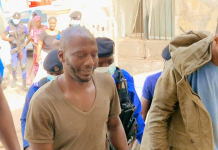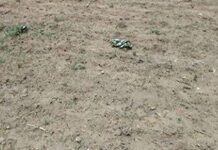In Memory to the Late Abdoulie G. Dibba
TAKING STOCK OF AGRIC PROGRAMES AND PROJECTS
This column is devoted to monitoring and reporting on issues that relate to the production, processing, preservation and marketing of agricultural produce aimed at ensuring food security in the Gambia as well as the interventions of Government and non-governmental organizations in this regard.
Agriculture remains both a new and old source of national revenue and (youth) employment. Improved public awareness and discussion of the issues involved will significantly maximize agricultural outcomes and the contribution of the sector to economic growth and job creation.

This is precisely the reason why Farmers’ Eye is critically looking at every agricultural program or policy, to gauge whether the country’s agriculture and natural resources are properly harnessed to ensure food self-sufficiency.
We indicated that GNAIP has six programs and in the last edition, we started dealing with program 3. In this edition, we shall continue with the rest of the components of program 3, ie Development of Agricultural Chains and Market Promotion (USD89.85Million).
In the last edition, we indicated that the objective of this program is the transformation of the agricultural sector from a traditional subsistence economy to a modern market-oriented commercial sector with well-integrated food chains and a viable agro-processing private sector, resulting in increased incomes of agricultural value chain actors including farmers, input suppliers, processors, traders and exporters and the program aims to reduce imports of cheap food through ensuring availability of quality-standard local products on a sustainable basis. The program is comprised of three components: (i) development of agriculture and natural resource marketing chains;
(ii) strengthening of national operator support services and structures; and
(iii) development of markets.
Development of Agriculture and Natural Resource Marketing Chains: This first component comprises seven sub-components:
- food crop chain;
- groundnut chain;
- horticultural chain;
- agro-forestry food products chain;
- short-cycle livestock chain;
- dairy products chain; and
(vii) fisheries products chain.
The expected overall outcome of this component is that value chains are well integrated and effectively operated and that the agro-processing private sector is viable. The sub-components below represent key sectors of agricultural production, many of which already demonstrate success and show promise for development and up-scaling.
Food Crop Chain: The expected outcome is that the food crop chain is expanded through improved primary and secondary processing to increase the value-added in incomes of cereals. The programme will improve post-harvest handling, promote new ways of storage, increase availability, accessibility and optimal use of processing machines through training and providing access to credit and promote production and marketing according to standards. Direct beneficiaries will be rural households countrywide as well as entrepreneurs benefiting from capacity building and access to credit lines.
Groundnut Chain: The expected outcome is improved management of groundnut chains (oil and confectionery) and quality assurance of products to meet international standards and increase exports, thereby increasing the income of producers and foreign exchange earnings. Activities will include improving marketing infrastructures, strengthening the capacity of stakeholders and supporting quality production (e.g. grading systems, inputs etc). Cooperative Produce Marketing Societies (CPMS) and industrialists will be direct beneficiaries of capacity building and operational support. The Government will be an indirect beneficiary of this sub-component, from increased foreign exchange earnings.
Horticulture Chain: The expected outcome is that a market-oriented production of increased quality fresh and processed horticultural products, is established and post-harvest losses are reduced. Activities will emphasize improving quality and ensuring regular supplies of vegetables, improving preservation and storage technologies and strengthening capacity to meet commercial quality and sanitary standards. Women in particular, who are primary vegetable producers, will be the direct beneficiaries of capacity building and operational support.
Agro-forestry Food Products Chain: The expected outcome is income diversification notably for women and youth through sustainable exploitation of agroforestry food products. Activities will focus on improving the preservation, processing and marketing of agroforestry food products. This is a highly under-developed sub-sector, yet holds significant potential for additional income for rural families.
Short-Cycle Livestock Chain: The expected outcome is increased production of small ruminants, pigs and poultry to improve producers’ income and diet.





















